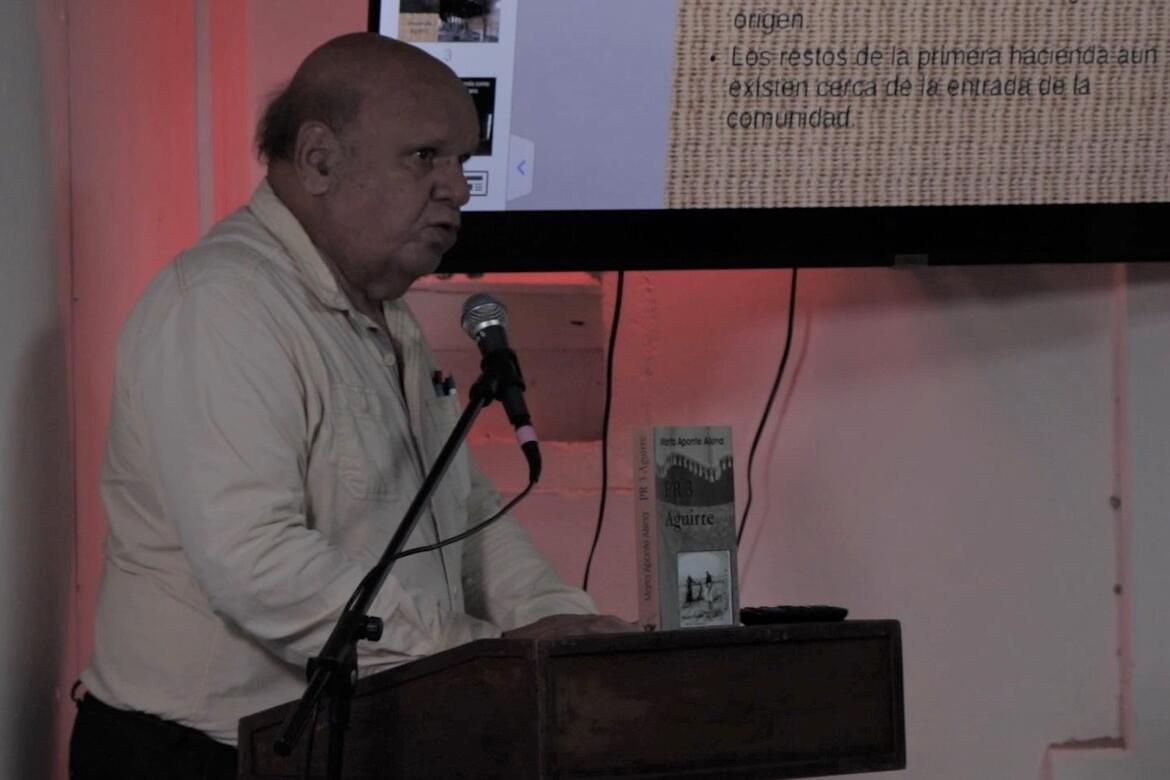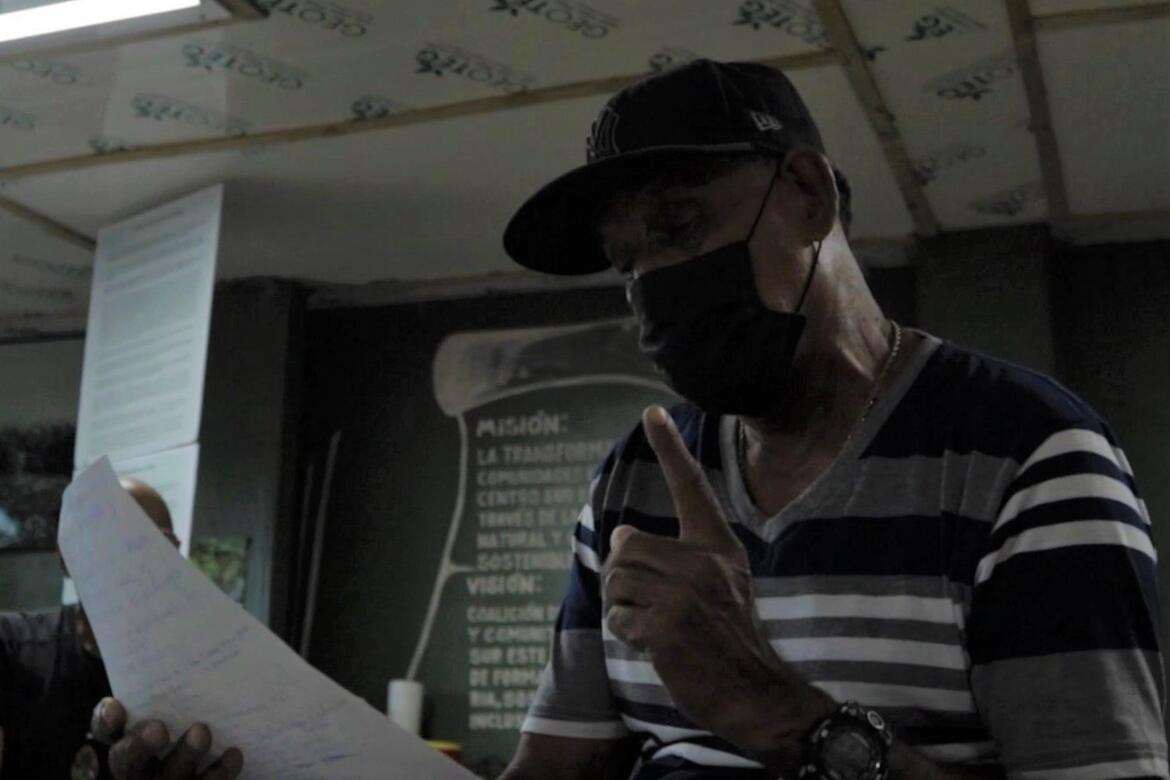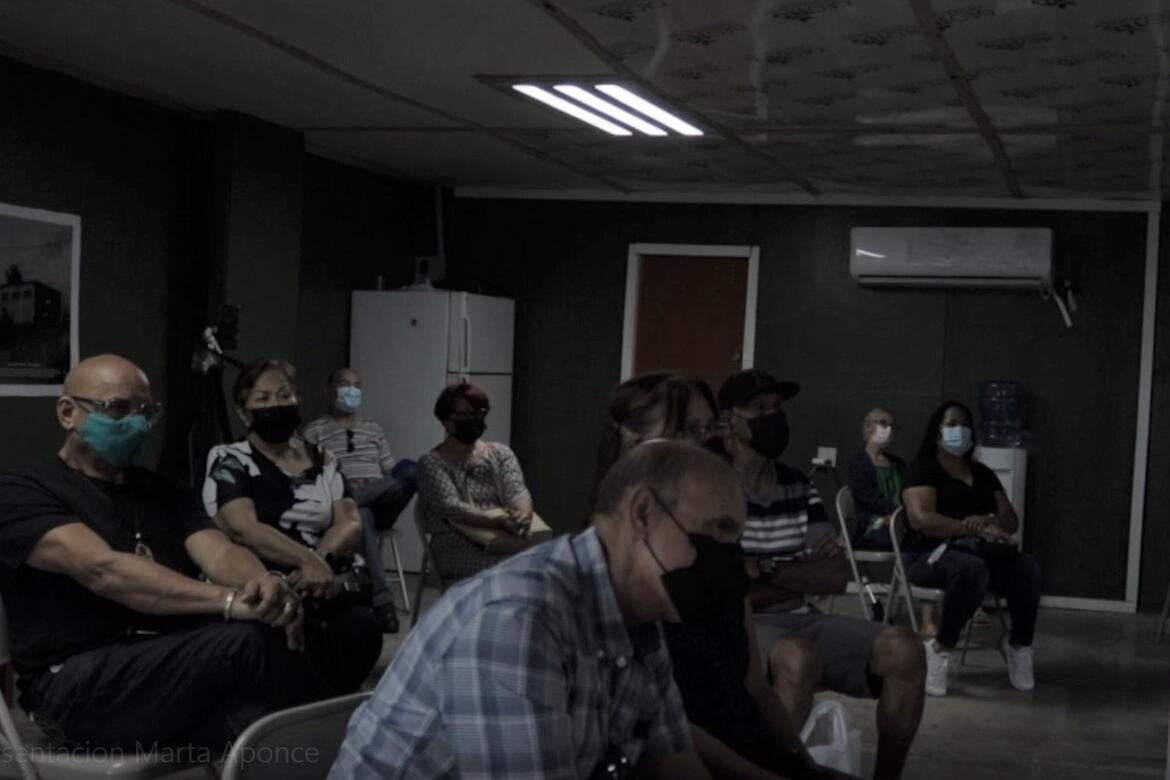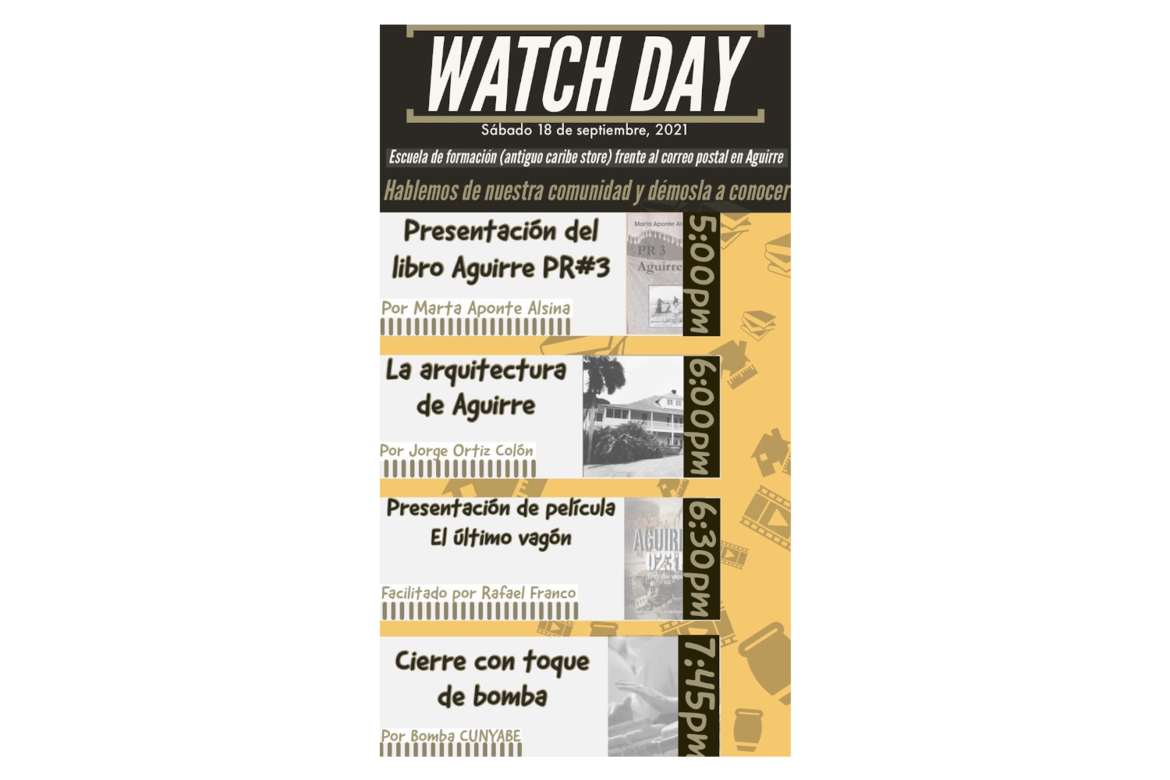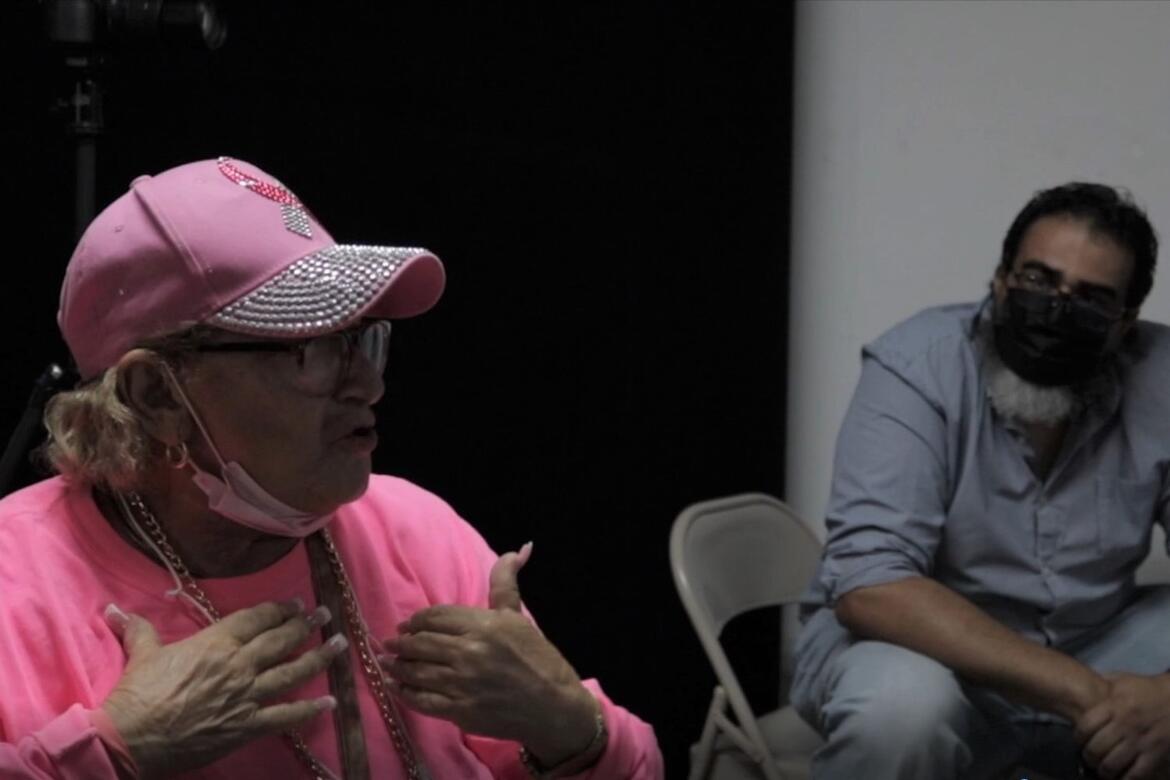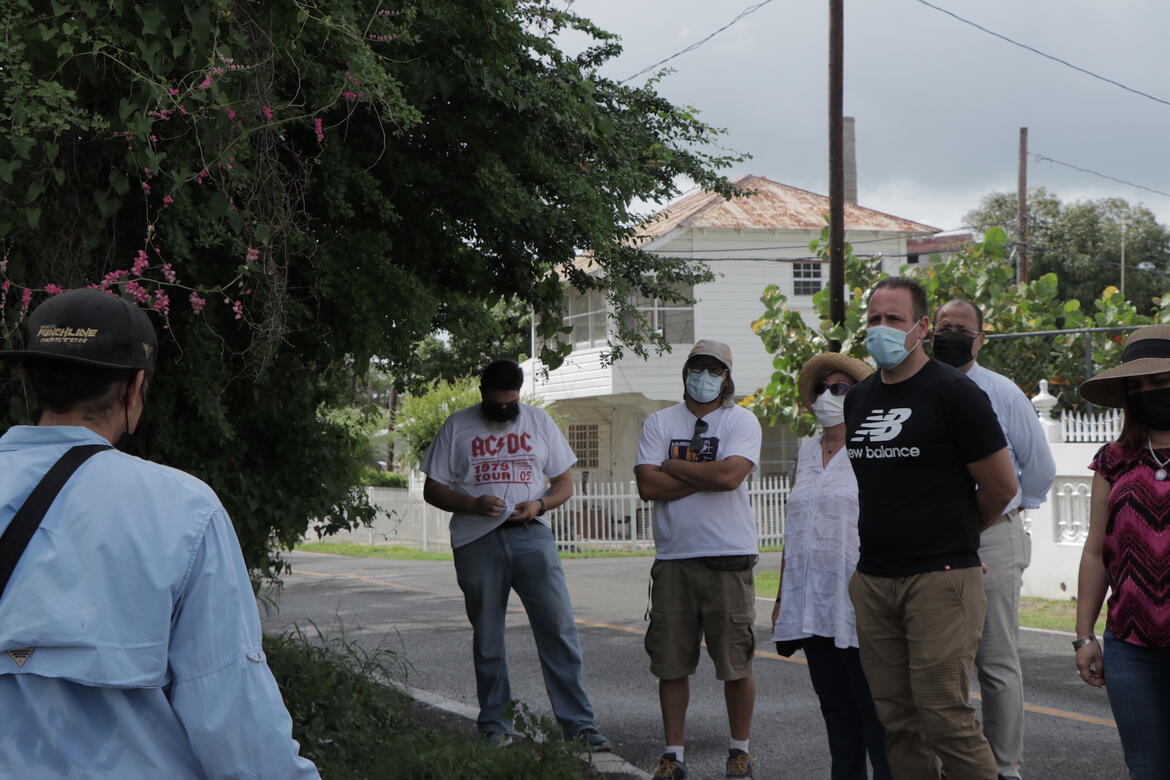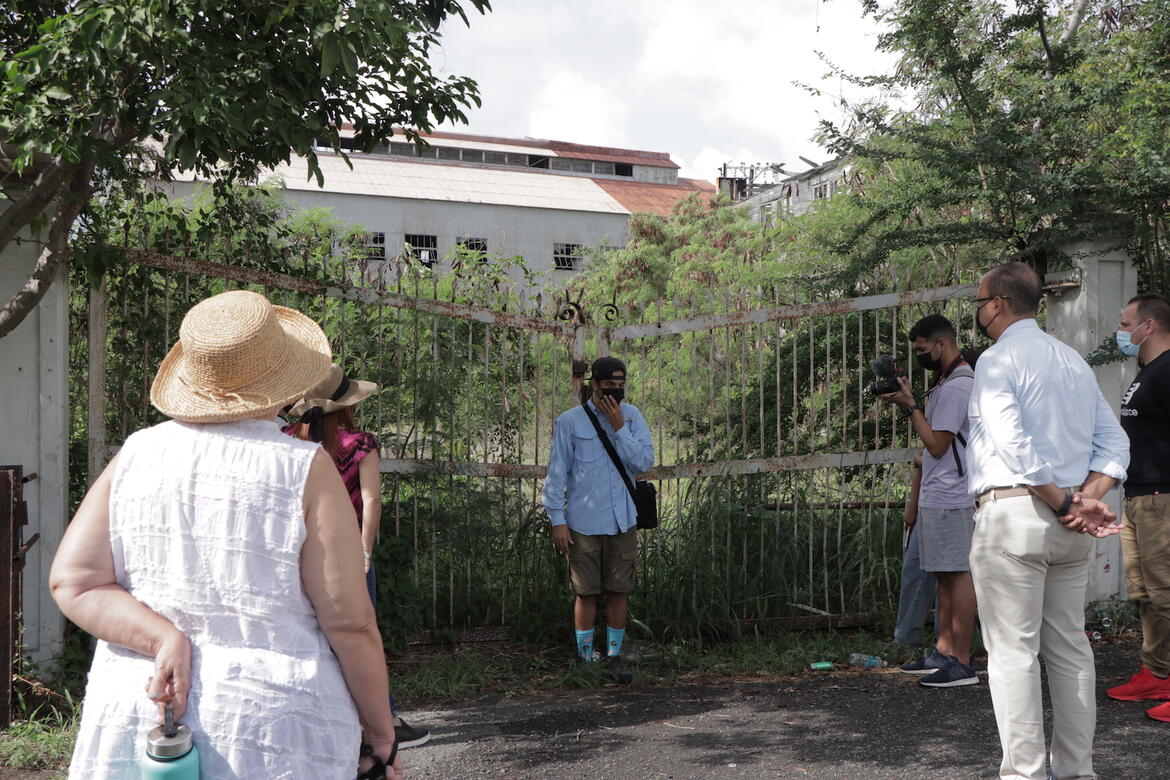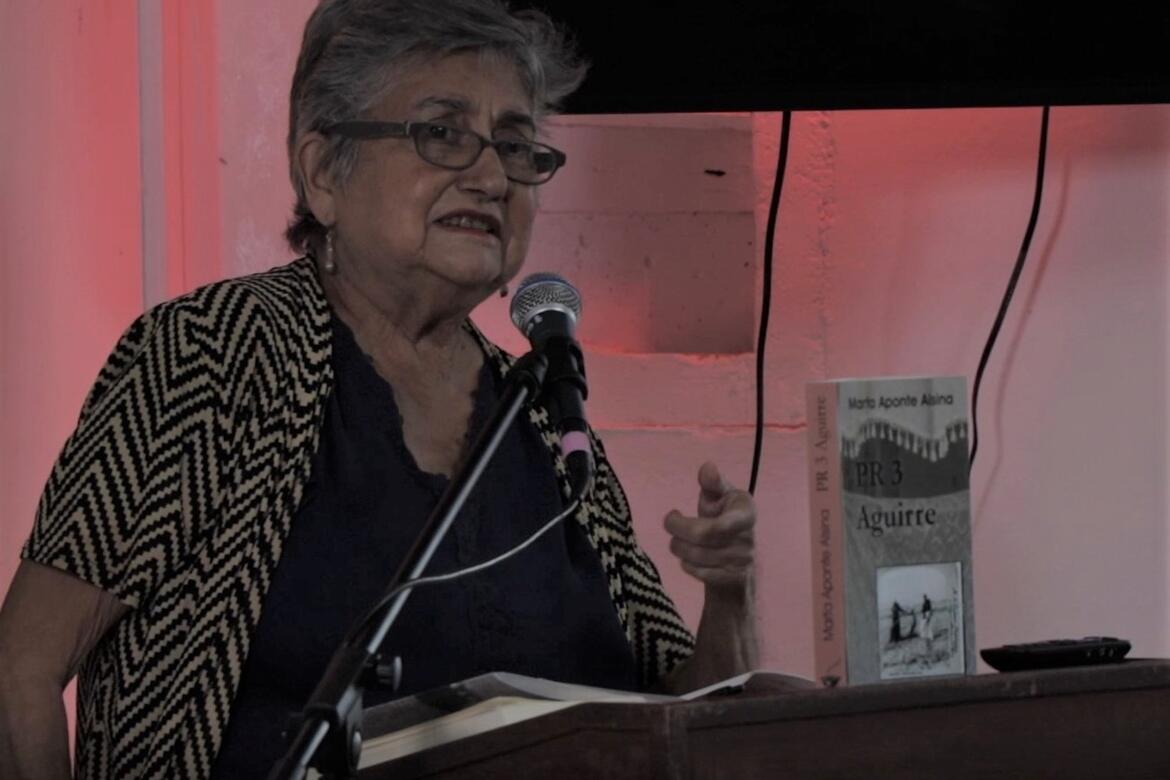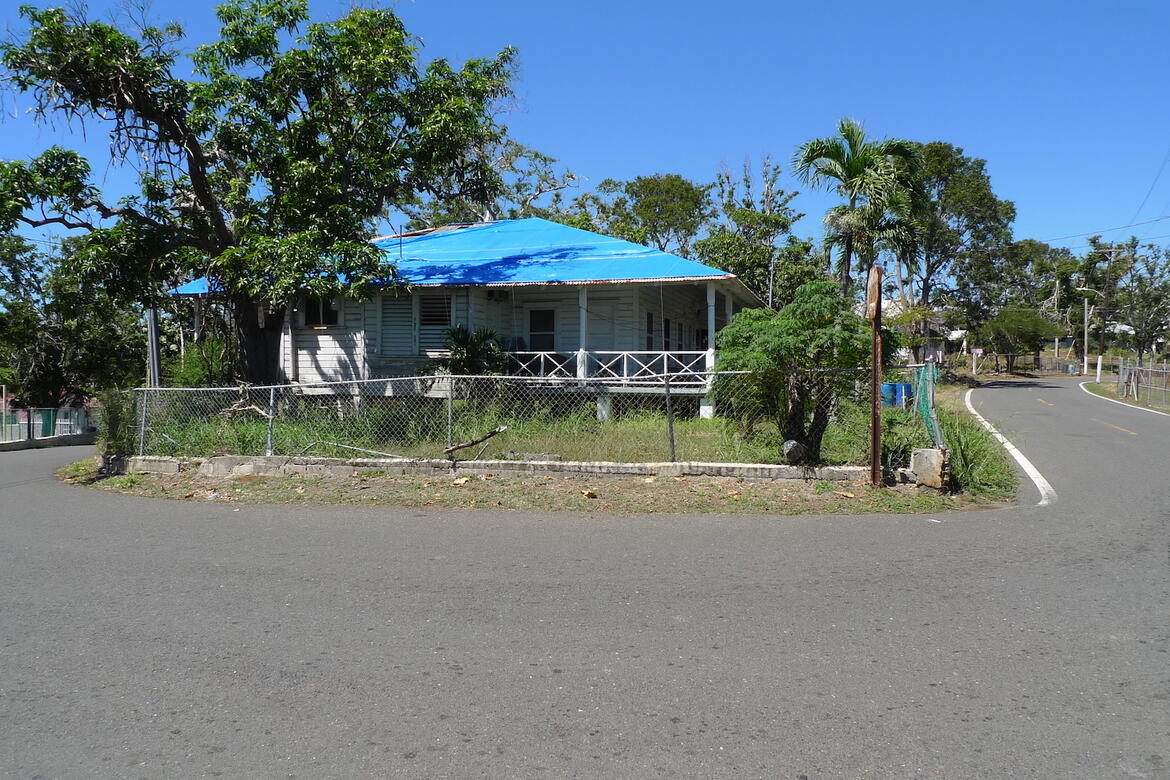A Look Back at Central Aguirre’s Watch Day
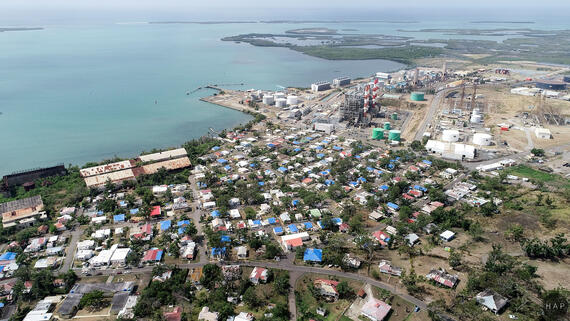
World Monuments Fund’s work at this site was made possible, in part, by American Express.
Central Aguirre is a former company town for the sugarcane industry in the southern municipality of Salinas, Puerto Rico. It was established by an American corporation from Boston shortly after the US invasion in 1898, and became the main economic driver in the area. Surrounding the vast coastal industrial complex were residences and supporting facilities such as plazas, schools, churches, a post office, a movie house, a hotel, and more, that made it a self-sustaining town that flourished until its decline began in the 1970s. Aguirre’s last zafra (sugar harvest) was in 1990.
Much of the cultural heritage in Central Aguirre survives today in various stages of deterioration brought mainly by economic decline, insufficient maintenance, and the ravages of intensifying hurricanes. Its designation as historic district is simultaneously a source of pride and an economic burden for the residents, who don’t have the means to repair and restore their wooden houses. The Central Aguirre was included on the 2020 World Monuments Watch, calling attention to the plight facing historic wooden structures in Puerto Rico and their communities in the aftermath of Hurricane Maria.
In celebration of Watch Day at Central Aguirre, members of IDEBAJO and Casa Comunitaria de Medios, two community organizations strongly engaged in Central Aguirre, had to adapt to the realities and restrictions of the COVID-19 pandemic. From July 2021, they organized a series of small in-person events where residents examined the history and dual reality of Central Aguirre. For almost 100 years, there were two sides to the company town—two styles of architecture, two schools, two hotels, two stores, two plazas—an intentional segregation of the American administrators and the Puerto Rican laborers. Watch Day activities included the following:
Two guided tours through the historic houses of the Company Town and the industrial area, highlighting stories from the community.
A book presentation and discussion led by Marta Aponte Alsina, author of Aguirre PR#3, delved into the research and creative process for the literary work.
Architect Jorge Ortiz Colom gave a presentation about the urban design and architecture found in Central Aguirre, highlighting the importance of preserving these cultural resources while recognizing the challenges of doing so.
Another activity was the screening of Aguirre 0231: el último vagón, a 2009 documentary film by Pedro O. Peláez Serrano, followed by a discussion moderated by historian Rafael Franco that juxtaposed the Aguirre of the past with that of the present-day, particularly in light of the damages from hurricane Maria.
Watch Day sparked a variety of discussions that led the members of Casa Comunitaria de Medios to produce the short film Aguirre: ¿Para Quién? (Aguirre: For Whom?). Through a series of interviews with residents, the short film looks back at the social differences of the company town, the community ties that remain, and the local activism that has reclaimed the space.
The event series concluded with performances of bomba in the style of the coastal south by Centro Cunyabe at Plaza Kennedy, a public space formerly used only by the American administrators and their families. Bomba is a musical style and dance that emerged in Puerto Rico’s sugar plantations, created by enslaved West Africans and their descendants. It remains a deeply-rooted expression of the island’s African heritage. By performing bomba at Plaza Kennedy, the dancers and musicians reclaimed the space and commemorated their ancestors. Below is a performance by Bomba Cunyabe at the sugar mill and warehouse of Central Aguirre.

